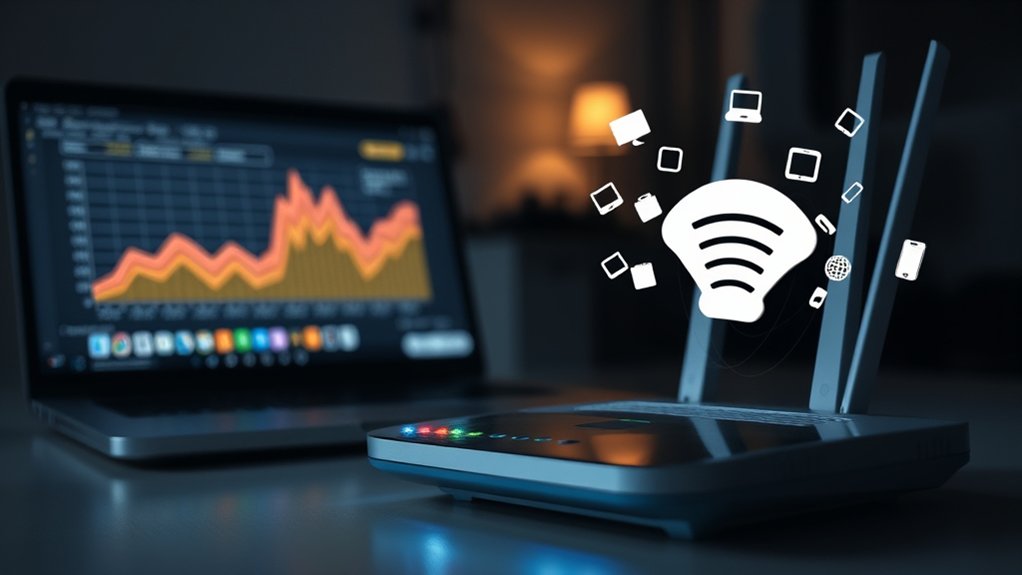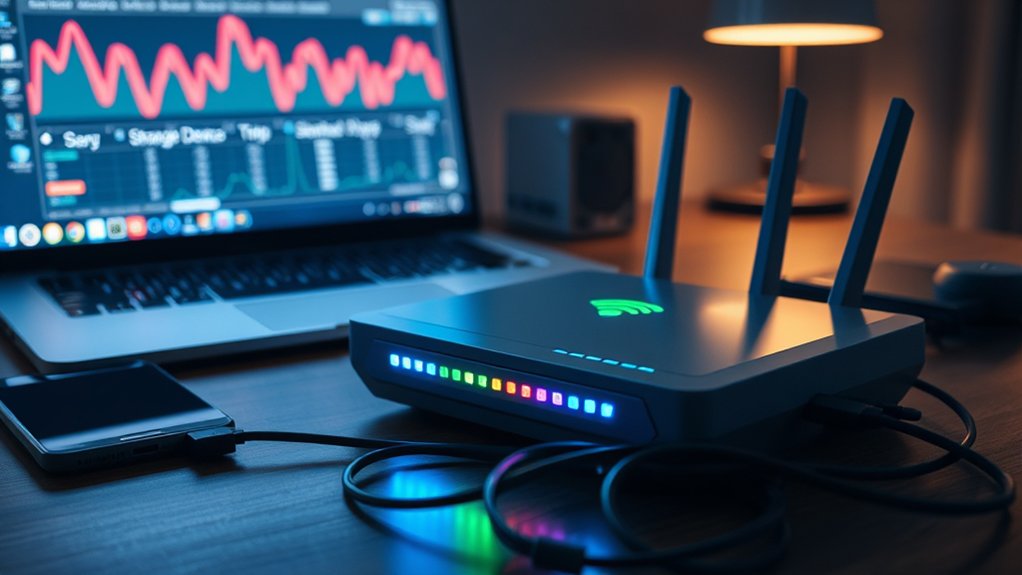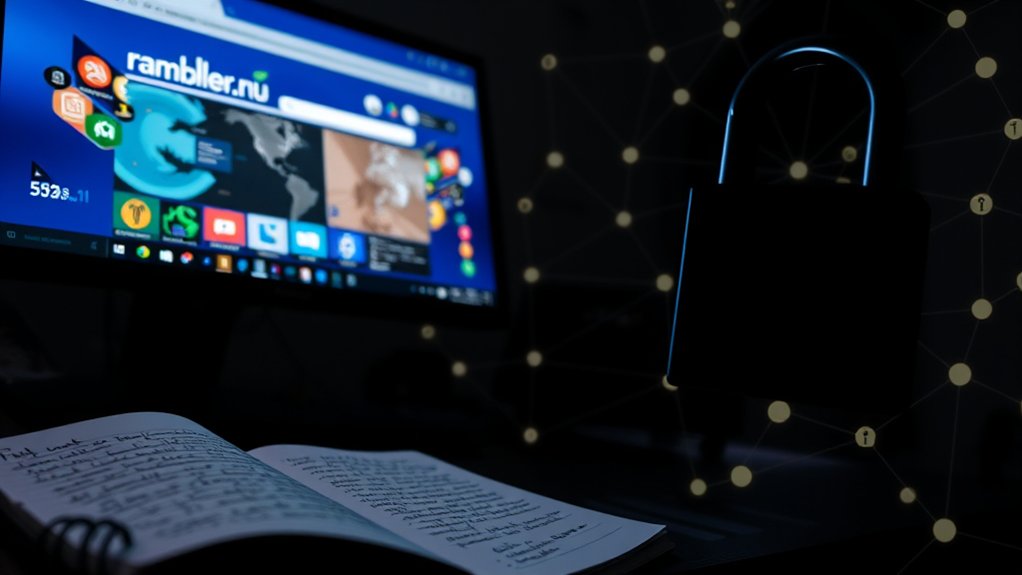Signs of Wi-Fi hacking include unexplained spikes in data usage, unexpected disconnections, and unfamiliar devices connected to the network. Users may notice unauthorized changes to router settings, such as altered SSID or password. Moreover, unexpected activity during non-peak hours can indicate unauthorized access. Internet service providers may report unusual network behavior or malware alerts. Monitoring these indicators is critical. Further insights into how to secure a network against breaches can provide further guidance on this issue.

In today’s digital environment, identifying whether a Wi-Fi network has been compromised is critical for maintaining online security. Various indicators can suggest unauthorized access, beginning with network performance issues. A significant slowdown in internet speeds or frequent disconnections from the Wi-Fi network may point to interference or hacking.
Users often notice inconsistent network availability or unexplained spikes in data usage that deviate from their normal habits. Furthermore, the presence of more devices connected than expected can indicate potential intruders. Monitoring network activity is crucial for detecting unauthorized devices. Regularly reviewing router settings to identify unfamiliar devices can reveal suspicious connections. Strange MAC addresses often appear linked to these unknown devices. Users may also find unexpected IP addresses in network logs, which could signify malicious activity. The detection of unfamiliar devices or IP addresses can be a strong indication that your network’s security has been compromised.
Inconsistent network availability and unexpected data usage spikes may signal potential intruders on your Wi-Fi network.
In addition, unusual device activity during non-peak hours raises alarms about potential breaches. Router settings should remain stable, as unauthorized changes can hint at hacking. Alterations to the network name (SSID) or password merit scrutiny, along with any tampering of DNS settings that could redirect traffic to harmful sites. The use of network logs can help identify unknown devices connected to your network and is a savvy method to track potential breaches.
The disabling of firewalls without user consent represents another significant red flag. Users may likewise find themselves locked out of the router’s administrative interface, which could indicate unauthorized access attempts.
An increase in network activity and alerts from internet service providers (ISPs) about unusual network behavior should not be overlooked. Signs of malware presence become apparent through sudden spikes in pop-up ads or redirected browsing experiences. The impact on devices may encompass unauthorized access to online accounts, unexpected software downloads, or a rise in spam messages.
To safeguard against these vulnerabilities, adhering to security alerts and responses is fundamental. This includes remaining vigilant about security software warnings and quickly addressing potential phishing attempts from malicious actors.
Regularly rebooting the router or updating firmware can further fortify defenses against unauthorized access.
Frequently Asked Questions
What Devices Are Commonly Targeted by Hackers on Wi-Fi Networks?
Devices commonly targeted by hackers on Wi-Fi networks include IoT devices, mobile phones, laptops, and routers. IoT devices, such as smart appliances, are particularly vulnerable owing to their connection to networks.
Mobile phones face risks when linked to compromised Wi-Fi. Laptops and tablets in public spaces often encounter threats from rogue access points.
Routers, especially with outdated firmware and weak passwords, serve as gateways for cybercriminals to infiltrate entire networks, facilitating broader attacks.
How Can I Secure My Wi-Fi Network From Being Hacked?
To secure a Wi-Fi network from hacking, users must implement several key strategies. Utilizing WPA3 for encryption is critical, as it offers improved security features.
Regularly updating router firmware and enabling firewalls can greatly reduce vulnerabilities. Experts recommend changing default SSIDs and using complex, unique passwords.
Furthermore, monitoring connected devices and employing MAC address filtering can further improve security. These proactive measures help to mitigate risks associated with unauthorized network access.
What Should I Do Immediately if I Suspect My Wi-Fi Is Hacked?
Upon suspicion of a Wi-Fi hack, immediate action is vital. Experts recommend disconnecting all devices to prevent further unauthorized access.
Following this, rebooting the router can temporarily sever any intruder connections.
A factory reset of the router restores original settings, eliminating potential threats.
Moreover, changing passwords for the network and router administration is fundamental.
Such actions create a strong initial defense against compromised network security, safeguarding sensitive data from potential exploitation.
Can I Track Unauthorized Devices on My Wi-Fi Network?
Detection of unauthorized devices on a Wi-Fi network is achievable through several tools and methods.
Wireless Network Watcher can identify all connected devices, whereas router access allows users to view device names and MAC addresses.
Implementing security measures, such as changing passwords, disabling WPS, and utilizing MAC address filtering, can further secure networks.
Regular audits and updated firmware help maintain security, preventing unauthorized access and enhancing overall network integrity.
What Are the Legal Implications of a Hacked Wi-Fi Network?
The legal implications of a hacked Wi-Fi network are serious and complex. Unauthorized access often constitutes a federal crime under the Computer Fraud and Abuse Act (CFAA), potentially leading to hefty fines or imprisonment.
Civil violations may result in lawsuits for damages. Courts interpret lack of authorization as implicit, reinforcing the seriousness of unauthorized access.
As cybersecurity expert John Doe states, “Violating network security can have long-lasting legal repercussions.”
Awareness of these risks is essential for users.









